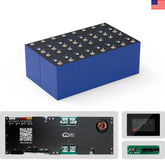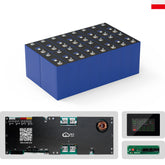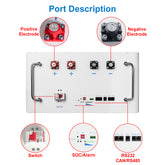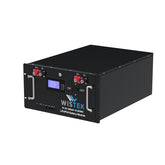How to Tell When a 12V Lead Acid Battery Is Fully Discharged
Understanding when a 12V lead acid battery is fully discharged is crucial for maintaining its health and longevity. A 12V lead acid battery is considered fully discharged when its resting voltage drops below 11.8 volts. At this point, the battery has lost a significant portion of its charge and may not be able to power devices effectively. Regularly monitoring the voltage can help prevent deep discharges that can lead to permanent damage.
- 12V Lead Acid Battery Voltage and Discharge Levels
- Factors Affecting Battery Voltage Readings
- Importance of Monitoring Battery Voltage
12V Lead Acid Battery Voltage and Discharge Levels
The voltage of a 12V lead acid battery correlates directly with its state of charge. By measuring the resting voltage, you can estimate the battery's charge level:
12V Lead Acid Battery Voltage Chart
|
Voltage (V) |
State of Charge (%) |
Condition |
|
12.6–12.8 |
100% |
Fully charged |
|
12.4–12.5 |
75% |
Partially charged |
|
12.2–12.3 |
50% |
Half charged |
|
12.0–12.1 |
25% |
Low charge |
|
Below 11.8 |
0% |
Fully discharged |
A fully charged 12V lead acid battery typically reads between 12.6 and 12.8 volts. As the battery discharges, the voltage decreases. When the voltage drops below 11.8 volts, the battery is considered fully discharged and may not function properly.
>>See also Understanding the Various Types of Golf Carts and Their Differences
Factors Affecting Battery Voltage Readings
Several factors can influence the voltage readings of a 12V lead acid battery:
1. Battery Type
Different types of lead acid batteries, such as flooded, AGM (Absorbed Glass Mat), and gel, have varying voltage characteristics. For instance, AGM batteries may show slightly higher voltages at the same state of charge compared to flooded batteries.
2. Temperature
Temperature significantly affects battery voltage. Cold temperatures can cause the voltage to drop, while warm temperatures can cause it to rise. It's essential to consider the ambient temperature when assessing the state of charge.
3. Load Conditions
Voltage readings taken under load (when the battery is powering a device) can be lower than those taken at rest. It's recommended to measure the voltage after the battery has been at rest for several hours to obtain an accurate reading.
>>See also Troubleshooting a Black and Decker 36V Lithium Battery That Wont Charge
Importance of Monitoring Battery Voltage
Regularly monitoring the voltage of your 12V lead acid battery can help:
Prevent Deep Discharges: Avoiding deep discharges can extend the battery's lifespan.
Ensure Reliable Operation: Maintaining a sufficient charge ensures that devices powered by the battery operate reliably.
Detect Potential Issues Early: Monitoring voltage can help identify issues like sulfation or internal short circuits before they lead to complete failure.
A 12V lead acid battery is considered fully discharged when its resting voltage drops below 11.8 volts. Regularly monitoring the voltage and understanding the factors that affect it can help maintain the battery's health and ensure reliable operation of the devices it powers.
By adhering to these guidelines and regularly checking the battery's voltage, you can prevent deep discharges and extend the lifespan of your 12V lead acid battery.
Remember, a fully charged 12V lead acid battery typically reads between 12.6 and 12.8 volts. If you notice the voltage dropping below 11.8 volts, it's time to recharge the battery to prevent potential damage.



















Leave a comment
All blog comments are checked prior to publishing